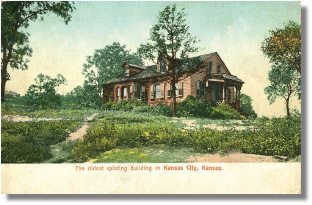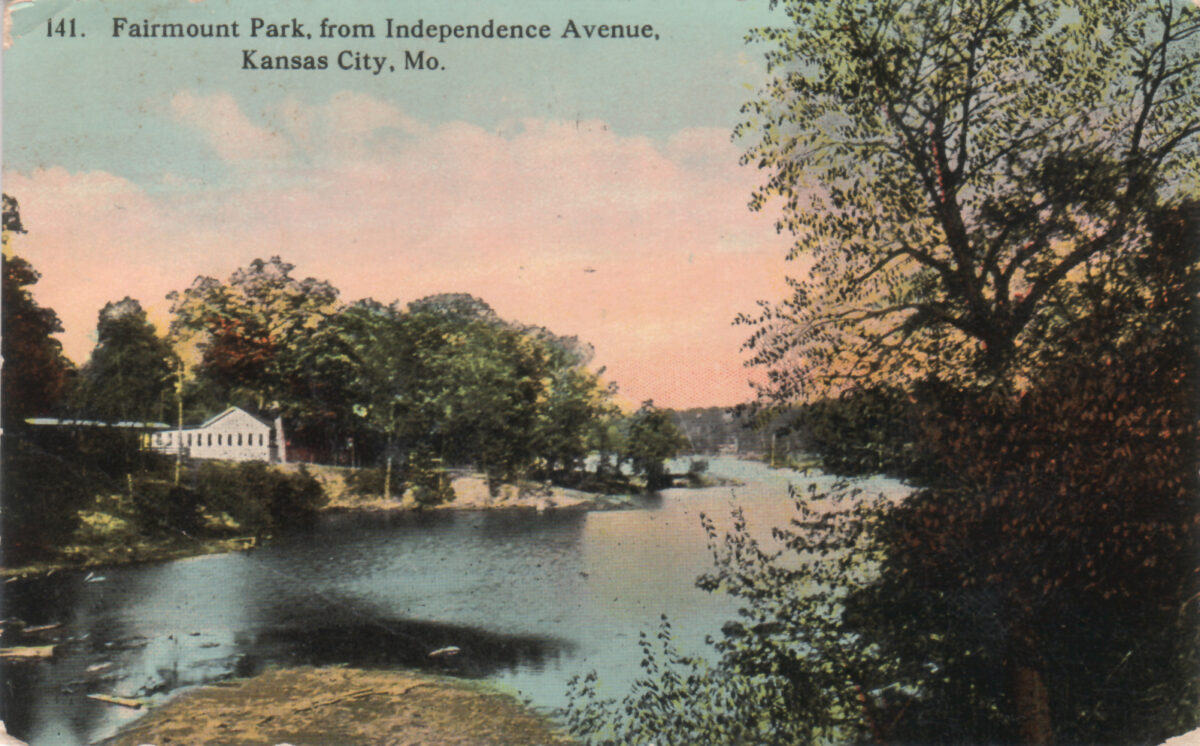
Published by the Southwest News Company of Kansas City, Mo., this circa 1906 postcard shows the oldest existing building in Kansas City, Kan. Built in 1846, the structure was the home of John M. and Lucy B. Armstrong, the first to settle the area that would later become Kansas City, Kan.
Born July 31, 1818, in northern Ohio, young Lucy accompanied her Methodist missionary father on his travels to the Indian agencies and trading posts on the edge of what was then the great frontier. At 19, she married John Armstrong, a Wyandot Indian. Armstrong, although only part Wyandot, was highly educated, having studied at the Wyandotte Mission in Upper Sandusky, Ohio, and also at Norwalk Seminary. He was a strong advocate for the Wyandot tribe, working largely with Head Chief John Barnett on the ratification of a fair and equitable removal treaty (from Ohio) with the federal government.
Early in 1843, shortly after the treaty ratification, the Armstrongs, along with other Wyandot tribal leaders, traveled to the West Port landing area of the then Town of Kansas to prepare the way for other members of the Wyandot nation removed from the Ohio area. In 1843, Armstrong completed the construction of a log cabin near what is now 5th and Freeman in Kansas City, Kan. A year later, the Tribal Council authorized Armstrong to contract with a carpenter from Liberty, Mo., for the building of a tribal schoolhouse, the first in the Kansas Territory. During that first year, both Lucy and her husband shared teaching duties at the school.
The residence shown on the postcard was constructed in 1846-47 and was located near the old cabin, just southwest of the freight depot for the Kansas City, Wyandotte & Northwestern Railroad at 5th and New Jersey.
In March of 1852, John Armstrong died at his mother-in-law’s home in Ohio while en route to Washington, D.C., on tribal business. Lucy continued to occupy the home until her death on Jan. 1, 1892. Throughout her later years, she remained a tireless advocate for the Wyandot tribe, often writing lengthy letters to state and federal government officials, lobbying heavily for the governments to honor land claims and payment commitments made in previous treaties to the tribe.
At the time this postcard was printed, the residence was indeed the oldest existing building in Kansas City, Kan., predating the Moses Grinter residence by roughly 10 years. An 1887 plat map provided by the Wyandotte County Museum shows the house with a Northwest exposure in the center of roughly 6 to 8 acres of land, bordered by Jersey Creek and bisected by the railroad. The home was torn down in the early part of the 20th Century to make way for new development.
Editor’s Note: Special thanks to Joe Brentano at Grinter Place and Jennifer Laughlin at the Wyandotte County Historical Museum for their assistance with this article.

















